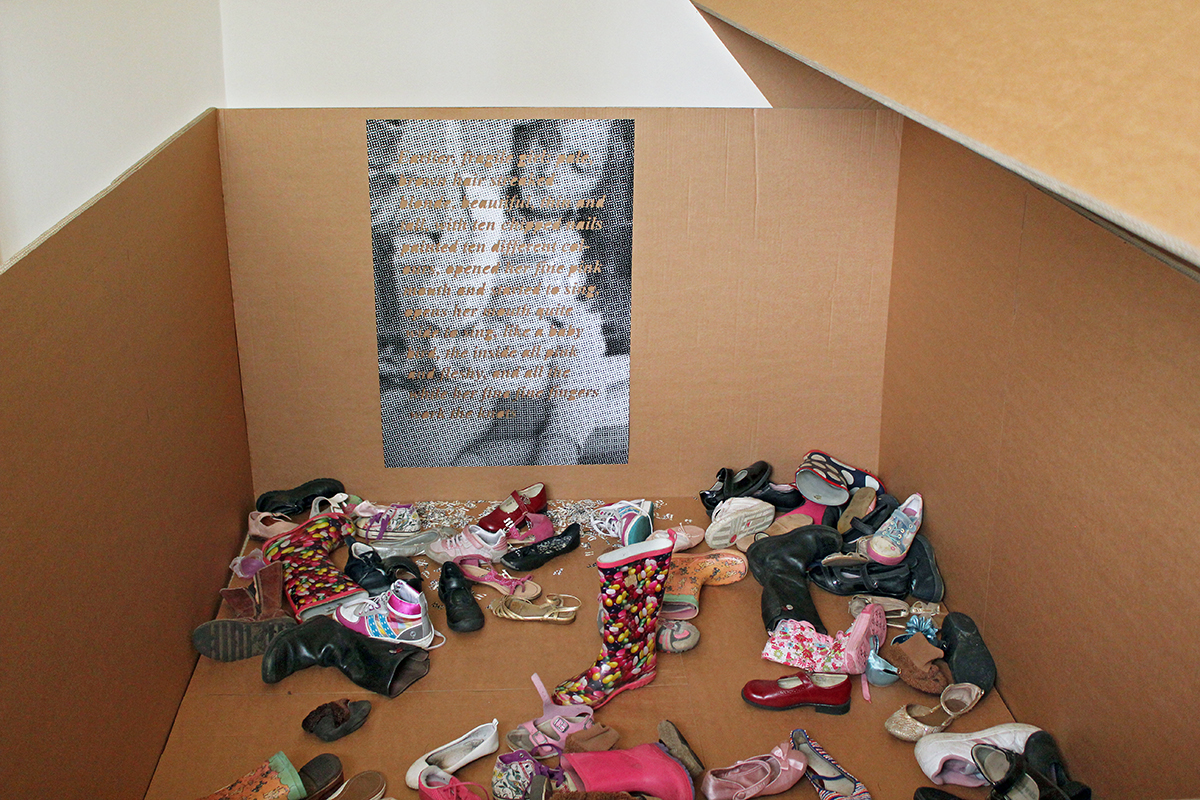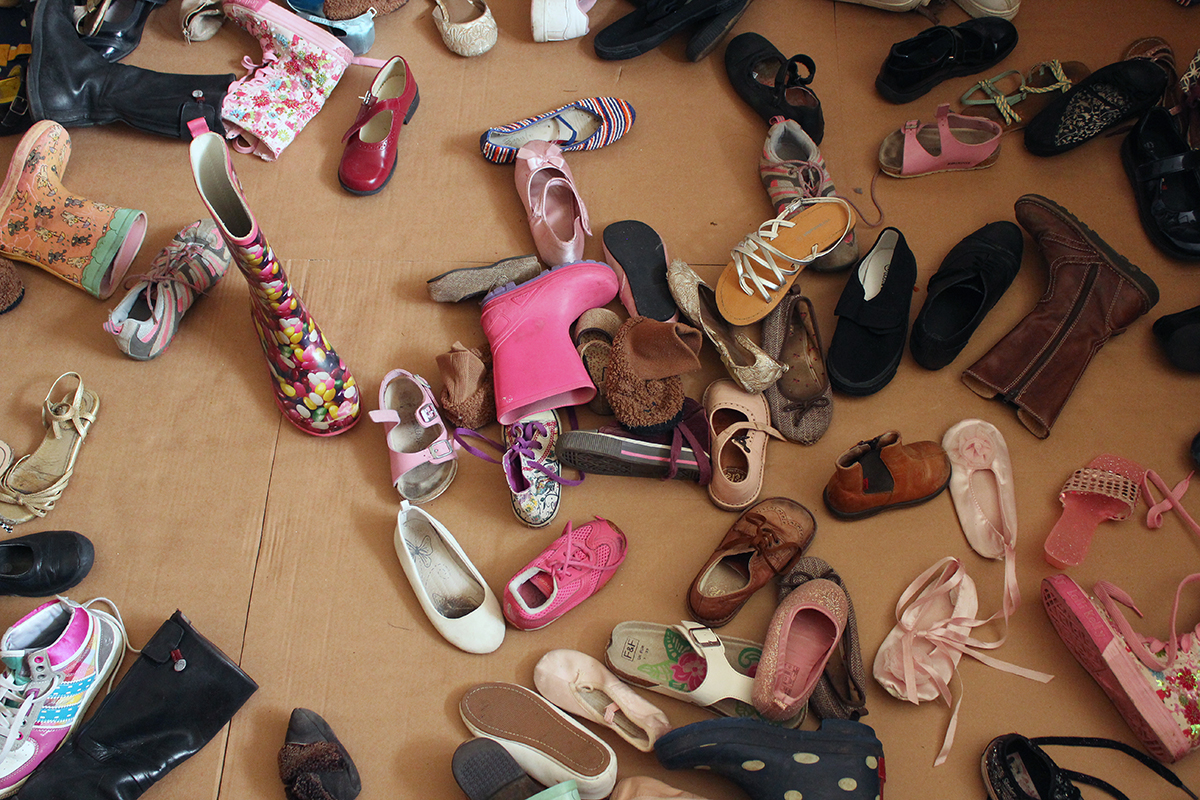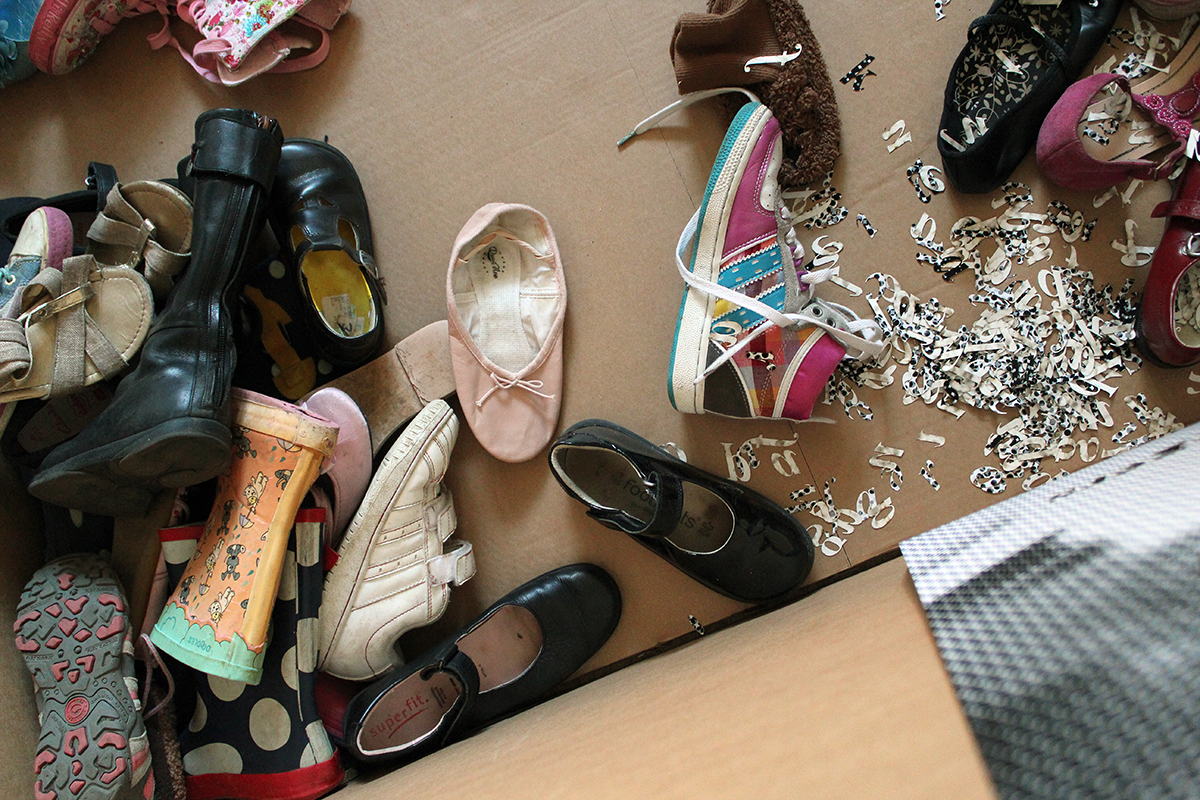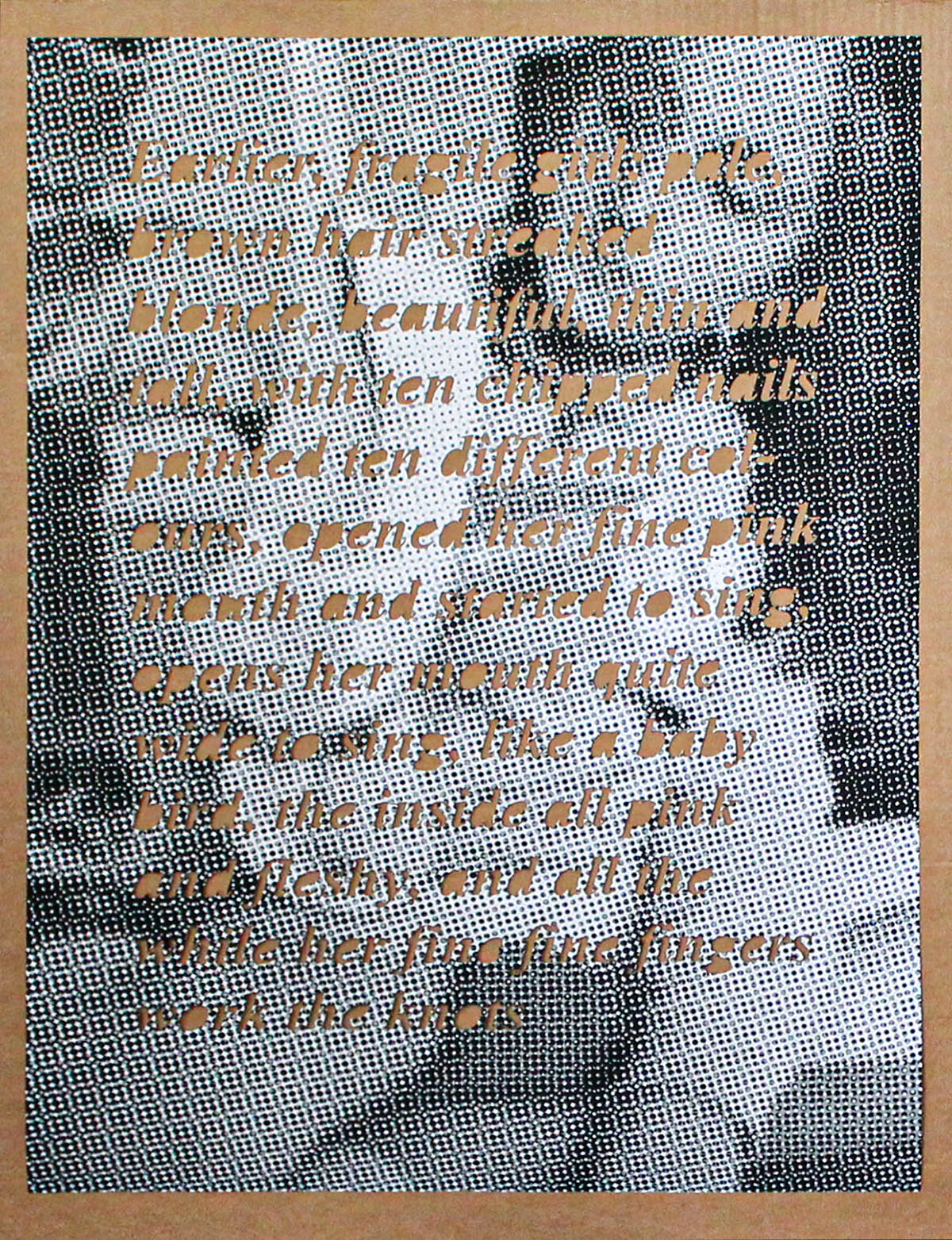Central to this work is the ever-expanding collection of shoes outgrown or discarded by Tracy & Edwin’s daughter Esméemilja.




Earlier, fragile girl: pale,
brown hair streaked
blonde, beautiful, thin and
tall, with ten chipped nails
painted ten different col-
ours, opened her fine pink
mouth and started to sing,
opens her mouth quite
wide to sing, like a baby
bird, the inside all pink
and fleshy, and all the
while her fine fine fingers
work the knots

Through the making and presentation of this work Tracy & Edwin probed what the purpose and value of art might be in dealing with difficult and sensitive subject matter and its potential as a vehicle for rebalancing psychological frailties.
Central to the work was the ever expanding shoe collection of Tracy & Edwin’s daughter Esméemilja. Amassed by her parents since her birth, the shoes were presented in a giant-sized, scaled-up replica cardboard shoe box. Paper letters, fragments from a text written by Tracy and based on conversations with Esméemilja, were cut from a black and white printed poster image and scattered amongst the shoes while Esméemilja occupied the box.
The sound piece that played continuously combined recordings of ordered and unordered sounds, the density increasing as layers built over the work’s duration: metronome, cuckoo clock, tap dancing, weather, birds, rain …
A companion publication comprising of 20 image cards with a story written by Esméemilja and Tracy was published in a boxed edition. The tale interweaves Esméemilja’s reflections on her shoe collection and ideas about memory, ageing, creative freedom, possession, fairy-tales, female childhood, time and biological growth.
The Story of the Girl and the Apple Tree was partly inspired by György Ligeti’s Poème Symphonique for 100 metronomes and by Karl Popper’s text Of Clouds and Clocks: an approach to the problem of rationality and the freedom of man. Popper’s metaphor describes the two ends of the spectrum of predictability in social science: clouds represent the disorderly and irregular, and clocks represent the predictable and rational. Two limited edition badges Clocks are Clouds and Clouds are Clocks, distributed free, reflected these opposing positions.
Inherent in The Story of the Girl and the Apple Tree is a consideration of the cycle of life, explored earlier by the artists in their video work Growth, Form and the Inevitability of Herself (2004) that linked the growth cycle of a garden to the human process of ageing, focussed through images of Tracy’s mother, and Esméemilja’s grandmother, Josephine.
Cupar Arts Festival, Cupar and Hill of Tarvit Mansion House, National Trust for Scotland, 2013